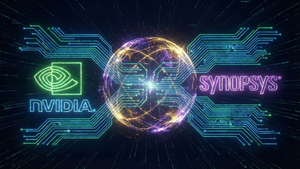
The global semiconductor sector is in the midst of an unprecedented investment boom, driven primarily by the insatiable demand stemming from the Artificial Intelligence (AI) revolution. This "AI Supercycle" is not merely a cyclical uptick but a fundamental reorientation of the industry, propelling massive capital expenditures, fostering strategic acquisitions, and catalyzing a global scramble for enhanced manufacturing capacity and resilient supply chains. With projections indicating a market valuation reaching $1 trillion by 2030, and potentially over $2 trillion by 2032, the immediate significance of these trends is clear: semiconductors are the bedrock of the AI era, and nations and corporations alike are pouring resources into securing their position in this critical technological frontier.
This intense period of expansion and innovation reflects a global recognition of semiconductors as a strategic asset, crucial for economic growth, national security, and technological leadership. From advanced AI accelerators to high-bandwidth memory, the demand for cutting-edge chips is reshaping investment priorities, forcing companies to commit colossal sums to research, development, and the construction of state-of-the-art fabrication facilities across continents. The ripple effects of these investments are profound, influencing everything from geopolitical alliances to the pace of technological advancement, and setting the stage for a new era of digital transformation.
Unprecedented Capital Inflows Drive Global Fab Expansion and Technological Leaps
The current investment landscape in the semiconductor industry is characterized by staggering capital expenditures and an aggressive build-out of manufacturing capacity worldwide, fundamentally driven by the escalating requirements of AI and high-performance computing (HPC). After a strong rebound of 19-19.1% growth in 2024, pushing global sales to approximately $627.6 billion, the market is projected to expand by another 11-15% in 2025, reaching an estimated $697 billion. This growth is predominantly fueled by the Memory and Logic Integrated Circuit segments, with High-Bandwidth Memory (HBM) alone experiencing an astounding 200% growth in 2024 and an anticipated 70% increase in 2025, directly attributable to AI demand.
To meet this surging demand, the industry is slated to allocate approximately $185 billion to capital expenditures in 2025, leading to a 7% expansion in global manufacturing capacity. The semiconductor manufacturing equipment market is forecast to reach $125.5 billion in sales in 2025. Major players are making colossal commitments: Micron Technology (NASDAQ: MU) plans a $200 billion investment in the U.S., including new leading-edge fabs in Idaho and New York, aimed at establishing end-to-end advanced HBM packaging capabilities. Intel (NASDAQ: INTC) is similarly constructing three new semiconductor fabs in the United States, while GlobalFoundries (NASDAQ: GFS) has announced a €1.1 billion expansion of its Dresden, Germany site, targeting over one million wafers per year by late 2028, supported by the European Chips Act.
In Asia, Taiwan Semiconductor Manufacturing Company (TSMC) (NYSE: TSM) is doubling its Chip-on-Wafer-on-Substrate (CoWoS) advanced packaging capacity in both 2024 and 2025, with monthly capacity projected to surge from 35,000-40,000 wafers to 80,000. Japan has pledged significant subsidies, totaling ¥1.2 trillion (about $7.8 billion), for TSMC's new facilities in Kumamoto. Globally, 97 new high-volume fabs are planned between 2023 and 2025, with 32 expected to commence operations in 2025. This unprecedented wave of investment, heavily bolstered by government incentives like the U.S. CHIPS Act and similar initiatives in Europe and Asia, underscores a global imperative to localize manufacturing and strengthen semiconductor supply chains, diverging significantly from previous cycles that often prioritized cost-efficiency over geographical diversification.
This current wave of investment differs from previous cycles primarily in its AI-centric nature and the geopolitical impetus behind it. While past expansions were often driven by consumer electronics or mobile computing, the "AI Supercycle" demands specialized hardware—advanced GPUs, HBM, and high-performance logic—that requires cutting-edge process nodes and complex packaging technologies. Initial reactions from the AI research community and industry experts highlight the criticality of hardware innovation alongside algorithmic breakthroughs, emphasizing that the future of AI is intrinsically linked to the ability to produce these sophisticated chips at scale. The sheer volume and strategic nature of these investments signal a profound shift in how the world views and funds semiconductor development, moving it to the forefront of national strategic interests.
Competitive Landscape Heats Up: Beneficiaries, Disruptions, and Strategic Maneuvers
The current investment trends are reshaping the competitive landscape, creating clear beneficiaries, potential disruptions, and driving strategic maneuvers among AI companies, tech giants, and startups alike. Companies at the forefront of AI chip design and manufacturing, such as NVIDIA (NASDAQ: NVDA), AMD (NASDAQ: AMD), and TSMC (NYSE: TSM), stand to benefit immensely from the surging demand for AI accelerators and advanced packaging. NVIDIA, with its dominant position in AI GPUs, continues to see unprecedented orders, while AMD is rapidly expanding its MI series accelerators, competing directly in the high-growth AI server market. TSMC, as the leading foundry for these advanced chips, is experiencing overwhelming demand for its cutting-edge process nodes and CoWoS packaging technology.
The competitive implications extend to memory manufacturers like Micron Technology (NASDAQ: MU) and Samsung Electronics (KRX: 005930), which are heavily investing in HBM production to cater to the memory-intensive requirements of AI workloads. Intel (NASDAQ: INTC), traditionally a CPU powerhouse, is aggressively pushing its foundry services and AI chip portfolio (e.g., Gaudi accelerators) to regain market share and position itself as a comprehensive provider in the AI era. These investments are not just about capacity; they are about securing technological leadership in critical components that define AI performance.
Strategic acquisitions are also playing a crucial role in consolidating market positions and expanding technological capabilities. In October 2025, NXP Semiconductors (NASDAQ: NXPI) completed acquisitions of Aviva Links and Kinara, Inc., bolstering its offerings in automotive networking, in-vehicle connectivity, and industrial & IoT markets—all sectors increasingly integrating AI. Similarly, onsemi (NASDAQ: ON) finalized its acquisition of Vcore power technologies from Aura Semiconductor, strengthening its power management portfolio specifically for AI data center applications. These targeted acquisitions allow companies to quickly integrate specialized IP and talent, enhancing their product roadmaps and competitive edge.
Furthermore, geopolitical factors are driving significant consolidation and strategic shifts, particularly in China. In September 2025, China's two largest foundry companies, Hua Hong Semiconductor (SSE: 688347) and Semiconductor Manufacturing International Corp. (SMIC) (HKEX: 00981), initiated substantial internal acquisitions to create "national champions" and streamline their fragmented supply chains amidst U.S. export controls. This strategic imperative aims to build self-sufficiency and foster integrated solutions across the semiconductor value chain, potentially disrupting existing global supply dynamics and forcing other nations to further localize their manufacturing efforts to mitigate risks. The market positioning and strategic advantages are increasingly tied not just to technological prowess, but also to supply chain resilience and national strategic alignment.
The Broader Canvas: Geopolitics, Supply Chains, and the AI Epoch
The current investment surge in the semiconductor sector transcends mere economic activity; it is a profound realignment within the broader AI landscape, carrying significant geopolitical and societal implications. This "AI Supercycle" is not just about faster chips; it's about enabling the next generation of AI models, from large language models (LLMs) to advanced robotics and autonomous systems, which will redefine industries and human-computer interaction. The sheer demand for computational power has made hardware breakthroughs as critical as algorithmic advancements, firmly embedding semiconductor capabilities at the core of national technological competitiveness.
The impacts are wide-ranging. Economically, the industry's growth contributes substantially to global GDP, creating high-value jobs and fostering innovation ecosystems. However, potential concerns include the immense capital intensity, which could lead to market concentration and erect high barriers to entry for new players. The environmental footprint of fab construction and operation, particularly water and energy consumption, is also a growing concern that requires sustainable solutions. Geopolitically, the race for semiconductor supremacy has intensified, with nations like the U.S. (CHIPS Act), Europe (European Chips Act), Japan, and India offering massive subsidies to attract manufacturing, aiming to diversify supply chains away from perceived risks and achieve technological sovereignty. This trend marks a significant departure from the globally integrated, just-in-time supply chains of the past, signaling a new era of regionalized production and strategic independence.
Comparisons to previous AI milestones reveal a unique characteristic of this epoch: the hardware constraint is more pronounced than ever. While earlier AI advancements focused on algorithmic improvements and data availability, the current frontier of generative AI and foundation models is bottlenecked by the availability of specialized, high-performance chips. This makes the current investment cycle a critical juncture, as it determines the physical infrastructure upon which the future of AI will be built. The global push for localization and resilience in semiconductor manufacturing is a direct response to past supply chain disruptions and escalating geopolitical tensions, signifying a long-term shift in global industrial policy.
The Road Ahead: Innovations, Challenges, and Expert Predictions
Looking ahead, the semiconductor sector is poised for continuous, rapid evolution, driven by the relentless demands of AI and emerging technologies. In the near term, we can expect continued significant capital expenditures, particularly in advanced packaging solutions like CoWoS and next-generation HBM, as these are critical bottlenecks for AI accelerator performance. The race to develop and mass-produce chips at 2nm and even 1.4nm process nodes will intensify, with companies like TSMC, Samsung, and Intel investing heavily in research and development to achieve these technological feats. We will also see further integration of AI into chip design and manufacturing processes themselves, leading to more efficient and complex chip architectures.
Potential applications on the horizon are vast, ranging from even more powerful and efficient AI data centers, enabling real-time processing of massive datasets, to pervasive AI at the edge in autonomous vehicles, smart cities, and advanced robotics. The convergence of AI with other transformative technologies like quantum computing and advanced materials science will likely spawn entirely new categories of semiconductor devices. For instance, neuromorphic computing, which mimics the human brain's structure, holds promise for ultra-low-power AI, while photonics integration could revolutionize data transfer speeds within and between chips.
However, significant challenges need to be addressed. The global talent shortage in semiconductor engineering and manufacturing remains a critical bottleneck, necessitating increased investment in education and workforce development, as evidenced by cooperation between Vietnam and Taiwan (China) in this area. Managing the escalating power consumption of AI chips and data centers is another pressing concern, driving innovation in energy-efficient architectures and cooling technologies. Furthermore, geopolitical tensions and export controls will continue to shape investment decisions and supply chain strategies, potentially leading to further fragmentation and regionalization of the industry. Experts predict that the focus will increasingly shift from simply increasing transistor density to optimizing chip architectures for specific AI workloads, alongside advancements in heterogeneous integration and system-in-package solutions. The next frontier will likely involve a holistic approach to chip design, moving beyond individual components to integrated, AI-optimized systems.
A New Era For Silicon: The AI Supercycle's Defining Moment
In summary, the global semiconductor sector is undergoing a transformative period marked by unprecedented investment, rapid technological advancement, and significant geopolitical recalibration. The "AI Supercycle" has firmly established itself as the primary catalyst, driving massive capital expenditures into new fabrication plants, advanced packaging capabilities, and cutting-edge process nodes. Market growth projections, reaching a potential $2 trillion valuation by 2032, underscore the long-term confidence in this sector's pivotal role in the digital economy. Strategic acquisitions and partnerships are consolidating market power and enhancing specialized capabilities, while government incentives are actively reshaping global supply chains towards greater resilience and regional self-sufficiency.
This development's significance in AI history cannot be overstated. It represents a defining moment where the physical infrastructure—the silicon—is recognized as equally crucial as the algorithms and data for pushing the boundaries of artificial intelligence. The shift from a cost-driven, globally optimized supply chain to a geopolitically influenced, regionally diversified model signifies a permanent change in how semiconductors are produced and traded. The implications for technological leadership, economic stability, and national security are profound and long-lasting.
In the coming weeks and months, industry observers should closely watch the progress of major fab constructions and expansions, particularly those supported by national chip acts. Further strategic acquisitions aimed at consolidating specialized technologies or securing critical intellectual property are also likely. Additionally, the evolution of advanced packaging solutions, the emergence of new memory technologies, and the continued efforts to address the talent gap and power consumption challenges will be key indicators of the industry's trajectory. The semiconductor industry is not just building chips; it is building the foundational infrastructure for the AI-driven future, making its current trajectory one of the most critical stories in technology today.
This content is intended for informational purposes only and represents analysis of current AI developments.
TokenRing AI delivers enterprise-grade solutions for multi-agent AI workflow orchestration, AI-powered development tools, and seamless remote collaboration platforms.
For more information, visit https://www.tokenring.ai/.






